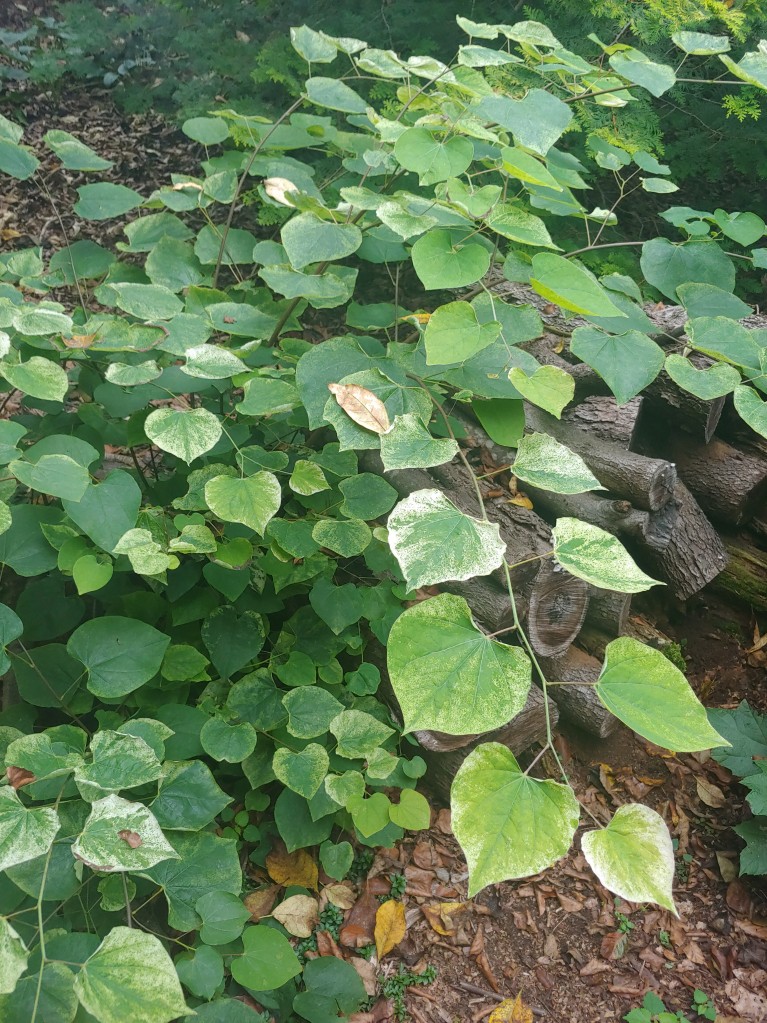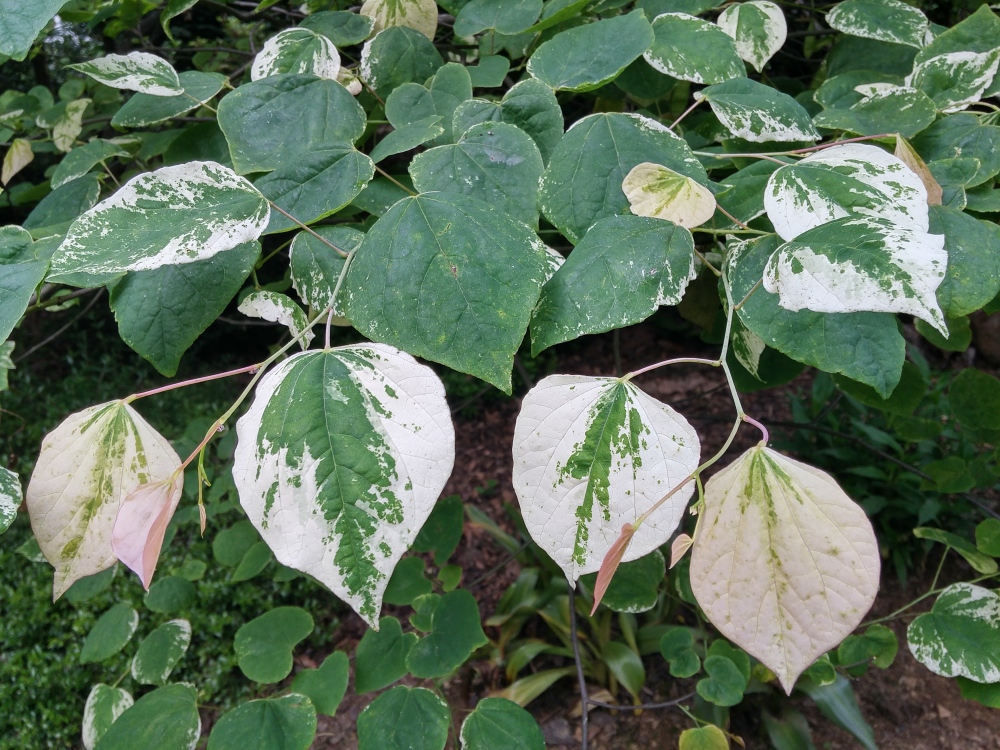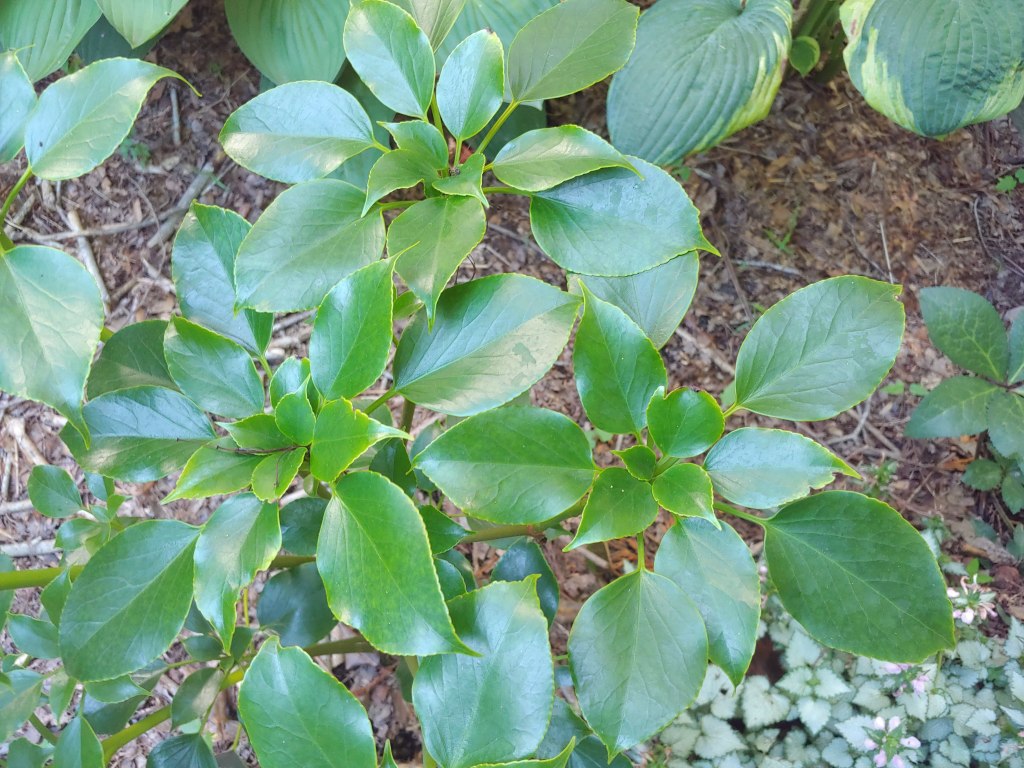A ‘Silver Cloud’ redbud (Cercis canadensis ‘Silver Cloud’, below) planted years ago leaned to the ground, creating an eyesore though it seemed to be in perfect health despite roots that were pulled far out of the soil. Unfortunately, it was cut to the roots earlier in the year. Despite ambitious, only partially fulfilled plans to fill the space once occupied by the sprawling redbud, there are now multiple sprouts from the roots that tempt me. I should, and probably will leave these to grow, and then thin the number of trunks to three as they gain size in a few years. With more limited space this is all likely to be too much, but it will be years before this is a real concern.

‘Silver Cloud’ is a delightful tree, nearly as colorful in leaf (below) as in flower, but the top heavy tree that once leaned slightly to better reach the sun followed the pull of gravity so that it finally leaned to an extreme angle onto the ground for support. A second ‘Silver Cloud’ now leans onto the small greenhouse, so a similar treatment of cutting to the ground and waiting for sucker growth seems imminent.

Over three decades there will be substantial changes in a garden, much of it growth, but also the decline of some old favorites. For whatever reason, the past year has seen several large evergreens, long into decline as the garden’s shade increased, removed and replaced by new plantings. It is fortunate, I think, that the redbuds are not completely lost, and with well established roots I expect both will become sizeable in a hurry.

A large, yellow tipped English yew (Taxus baccata ‘Dovastoniana aurea’) growing into the second story of the house, and tall Alaskan (Chamaecyparis nootkatensis ‘Pendula) and Atlas cedars (Cedrus atlantica ‘Glauca’) were overdue and finally cut to the ground in the past year. Of course, none were expected to grow from the roots, so immediate replacements were planted. The new trees, a knee high Wheel tree (Trochodendron aralioides, above) and a taller ‘Yellowbird’ magnolia will become favorites, more favored than the departed evergreens I’m certain, though the slow growing Wheel tree might take a few years to gain this favor.

A young Seven Son tree (Heptacodium miconiodes, above) is confused at the moment, with simultaneous white blooms and reddish bracts. An older tree that was lost in a blast of summer wind several years ago flowered in late summer, then flowers faded with bracts following. But, seeing both on this fast growing, young tree is not so surprising. I was also often confused when young and growing quickly.
The clusters of white flowers are favorites of our resident Carpenter bees, but of course the colorful bracts attract only my eye. I am thrilled that the small Seven Son flowered in late summer this first year after planting, and expect that it will grow vigorously next year to fill the space that was carved out by transplanting several shrubs to make room for it.
Dave, do you have any experience with Downy Serviceberry (Amelanchier arborea) in the NOVA area? It was added to a design plan but we were warned it has fungal problems in this area?
Amelanchier canadensis and A. arborea are commonly mistaken for one another, so I am uncertain which of the two I have planted in my garden. In any case, amelanchier regularly drops leaves for me in dry spells, but that’s a minor problem. It is susceptible to apple cedar rust when planted in the vicinity of our native redcedar (Juniperus virginiana), and I’ve seen this, though rarely. I would plant amelanchier anyway.
Thank you. Will be planting this Fall.